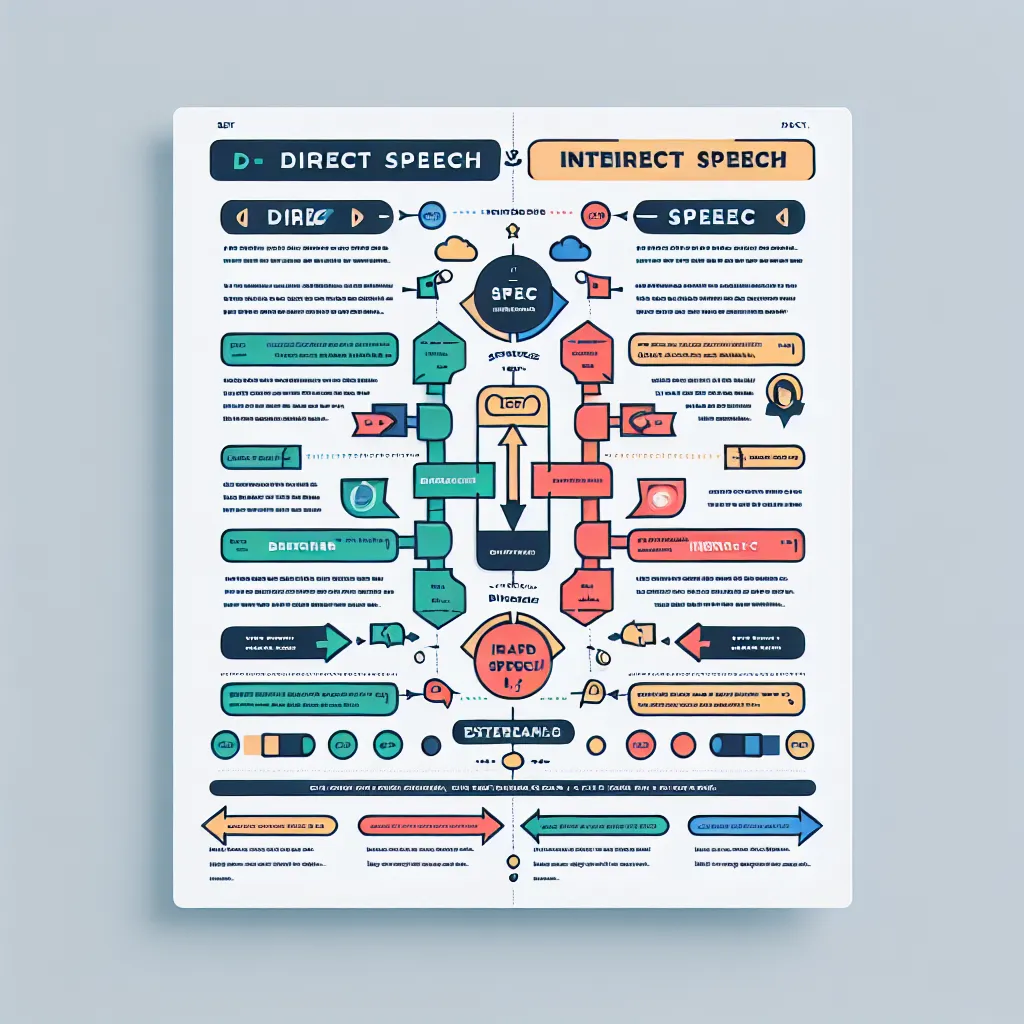Mastering the art of direct and indirect speech is crucial for effective communication in English. Whether you’re preparing for an exam like IELTS or aiming to enhance your everyday language skills, understanding how to use these speech forms correctly can significantly improve your English proficiency. In this comprehensive guide, we’ll explore various strategies and techniques to help you refine your use of direct and indirect speech.
Understanding Direct and Indirect Speech
Before diving into improvement strategies, it’s essential to grasp the fundamental differences between direct and indirect speech.
What is Direct Speech?
Direct speech, also known as quoted speech, refers to the exact words spoken by someone, enclosed in quotation marks. For example:
Sarah said, “I’m going to the store.”
What is Indirect Speech?
Indirect speech, also called reported speech, involves reporting what someone said without using their exact words. It typically involves changes in pronouns, verb tenses, and time expressions. For example:
Sarah said that she was going to the store.
 Direct and Indirect Speech Comparison
Direct and Indirect Speech Comparison
Strategies to Improve Your Use of Direct and Indirect Speech
1. Master the Rules of Tense Changes
One of the most crucial aspects of converting direct speech to indirect speech is understanding how tenses change. Here’s a quick guide:
- Present Simple → Past Simple
- Present Continuous → Past Continuous
- Present Perfect → Past Perfect
- Past Simple → Past Perfect
- Will → Would
- Can → Could
- May → Might
Example:
Direct: “I am studying for my exam,” Tom said.
Indirect: Tom said that he was studying for his exam.
2. Practice with Reported Questions
Reported questions can be tricky, as they require changes in word order and often the use of “if” or “whether” for yes/no questions.
Example:
Direct: “Do you like coffee?” she asked.
Indirect: She asked if I liked coffee.
3. Pay Attention to Time and Place Expressions
When converting to indirect speech, time and place expressions often need to be adjusted:
- “today” → that day
- “yesterday” → the day before / the previous day
- “tomorrow” → the next day / the following day
- “here” → there
- “this” → that
Example:
Direct: “I’ll meet you here tomorrow,” he said.
Indirect: He said he would meet me there the next day.
4. Use Reporting Verbs Effectively
Expand your vocabulary of reporting verbs to add variety and precision to your indirect speech. Some useful verbs include:
- Suggest
- Advise
- Recommend
- Insist
- Complain
- Warn
Example:
Direct: “You should study more,” the teacher said.
Indirect: The teacher advised that I should study more.
5. Practice with Real-Life Materials
Incorporate authentic materials into your practice:
- News articles: Convert quotes from direct to indirect speech
- Dialogues from books or movies: Rewrite conversations in reported speech
- Interviews: Report the questions and answers in indirect speech
 Authentic Materials for Speech Practice
Authentic Materials for Speech Practice
6. Use Technology to Your Advantage
Leverage language learning apps and online resources:
- Quizlet: Create flashcards for direct and indirect speech practice
- Grammarly: Check your written conversions for accuracy
- YouTube: Watch tutorials on reported speech rules and practice
7. Engage in Role-Play Exercises
Participate in speaking activities that involve reporting:
- News reporter exercise: Report on events or interviews
- Gossip game: Pass information through a group, converting between direct and indirect speech
- Telephone game: Similar to the gossip game, but focus on accurate reporting
Common Mistakes to Avoid
- Forgetting to change pronouns
- Incorrect tense shifts
- Misusing reporting verbs
- Failing to adjust time expressions
- Keeping question word order in reported questions
Practice Exercises
To reinforce your learning, try these exercises:
-
Convert the following direct speech to indirect speech:
- “I have finished my homework,” Mary said.
- “Where did you buy that dress?” Tom asked Sarah.
- “We will visit Paris next summer,” they announced.
-
Rewrite this paragraph, changing all direct speech to indirect:
“I’m so excited about the concert tonight,” Emma told her friend. “Do you think we’ll get good seats?” she asked. Her friend replied, “I’m sure we will. I’ve been waiting in line for hours!”
Conclusion
Improving your use of direct and indirect speech takes practice and attention to detail. By focusing on tense changes, mastering reported questions, and expanding your vocabulary of reporting verbs, you’ll become more confident in using these essential language structures. Remember to practice regularly with authentic materials and engage in interactive exercises to reinforce your skills.
As you continue to develop your proficiency in direct and indirect speech, you’ll find that your overall English communication becomes more nuanced and effective. Keep practicing, and don’t hesitate to seek feedback from teachers or language exchange partners. With dedication and consistent effort, you’ll see significant improvements in your ability to use direct and indirect speech accurately and confidently.




